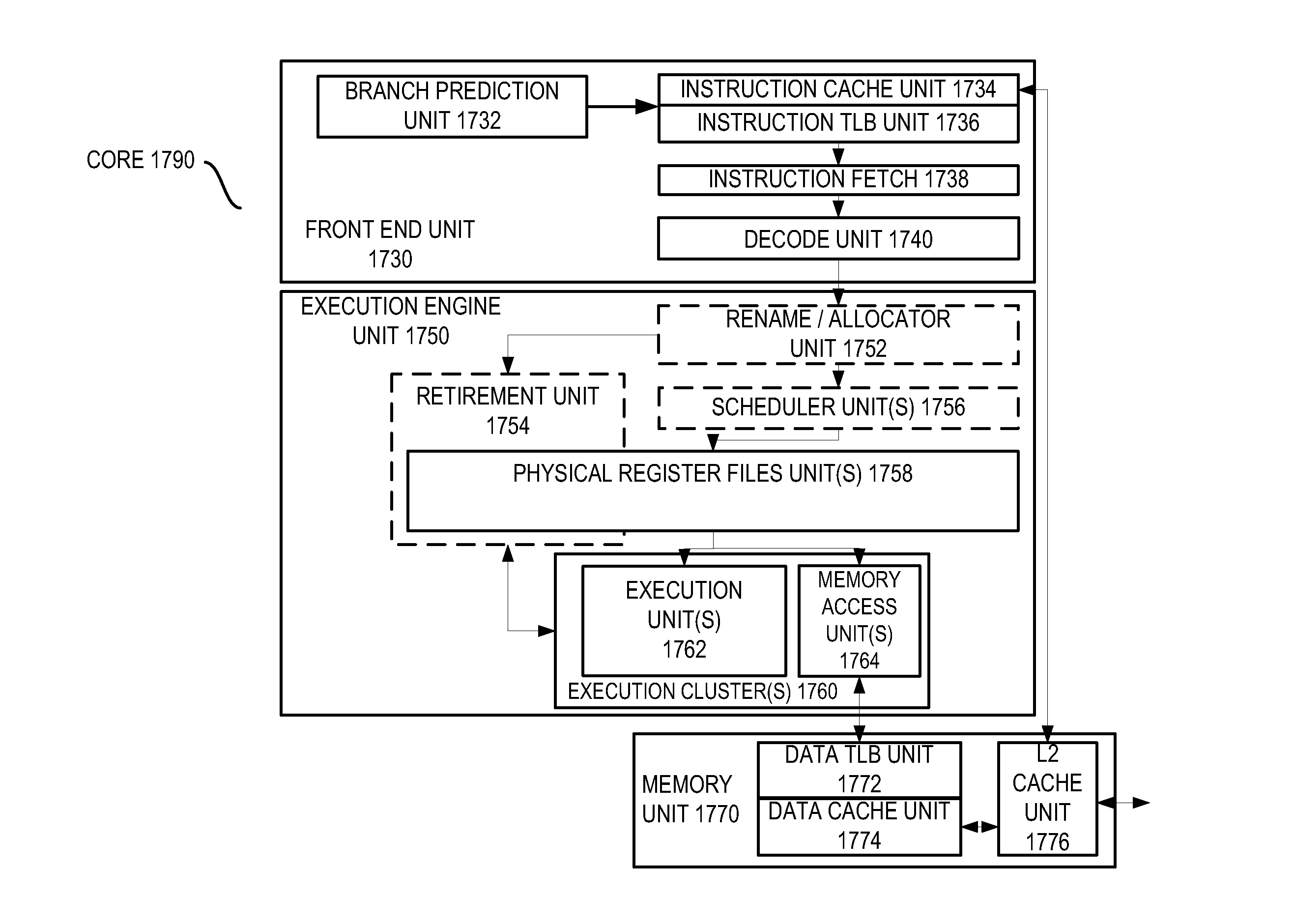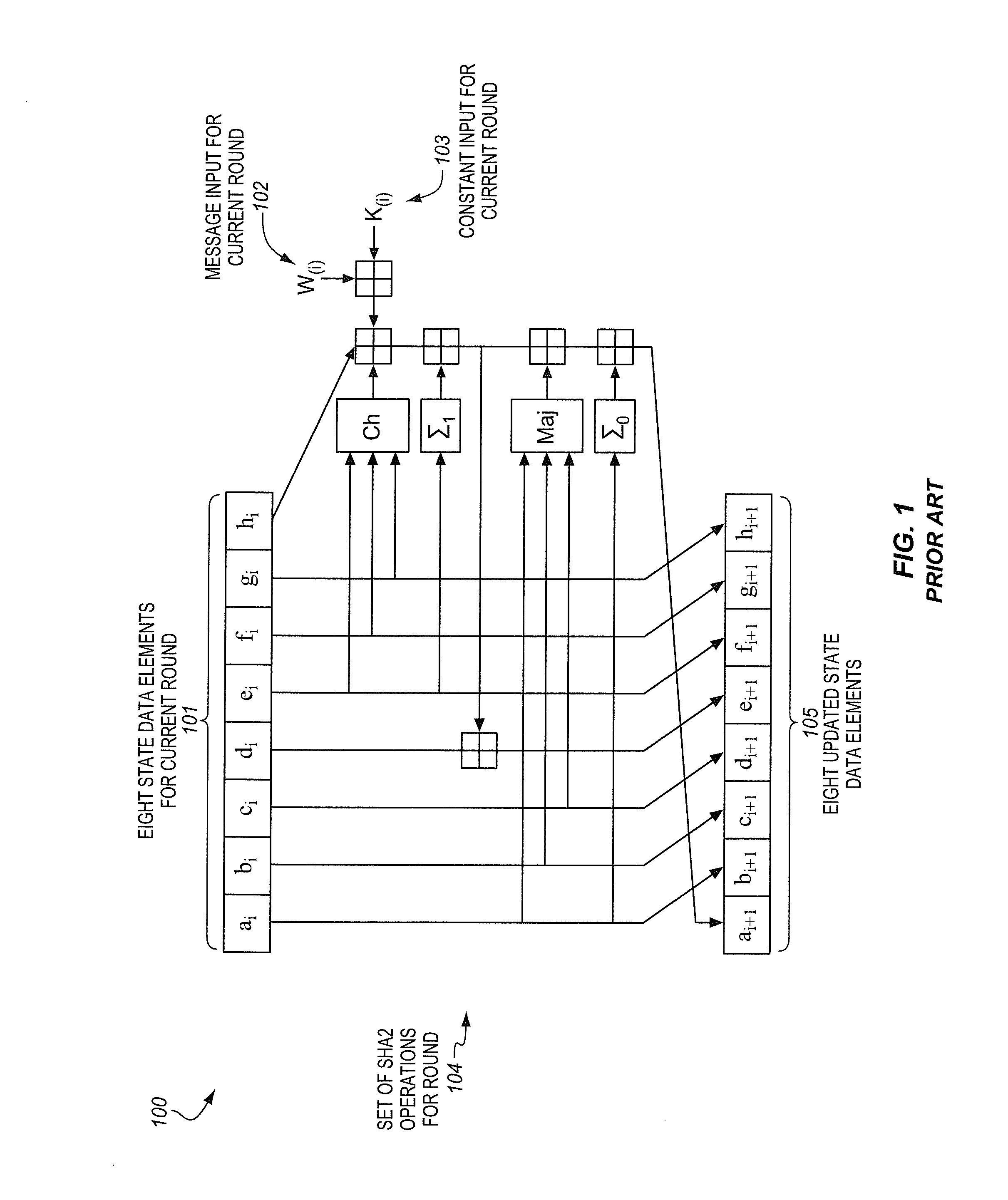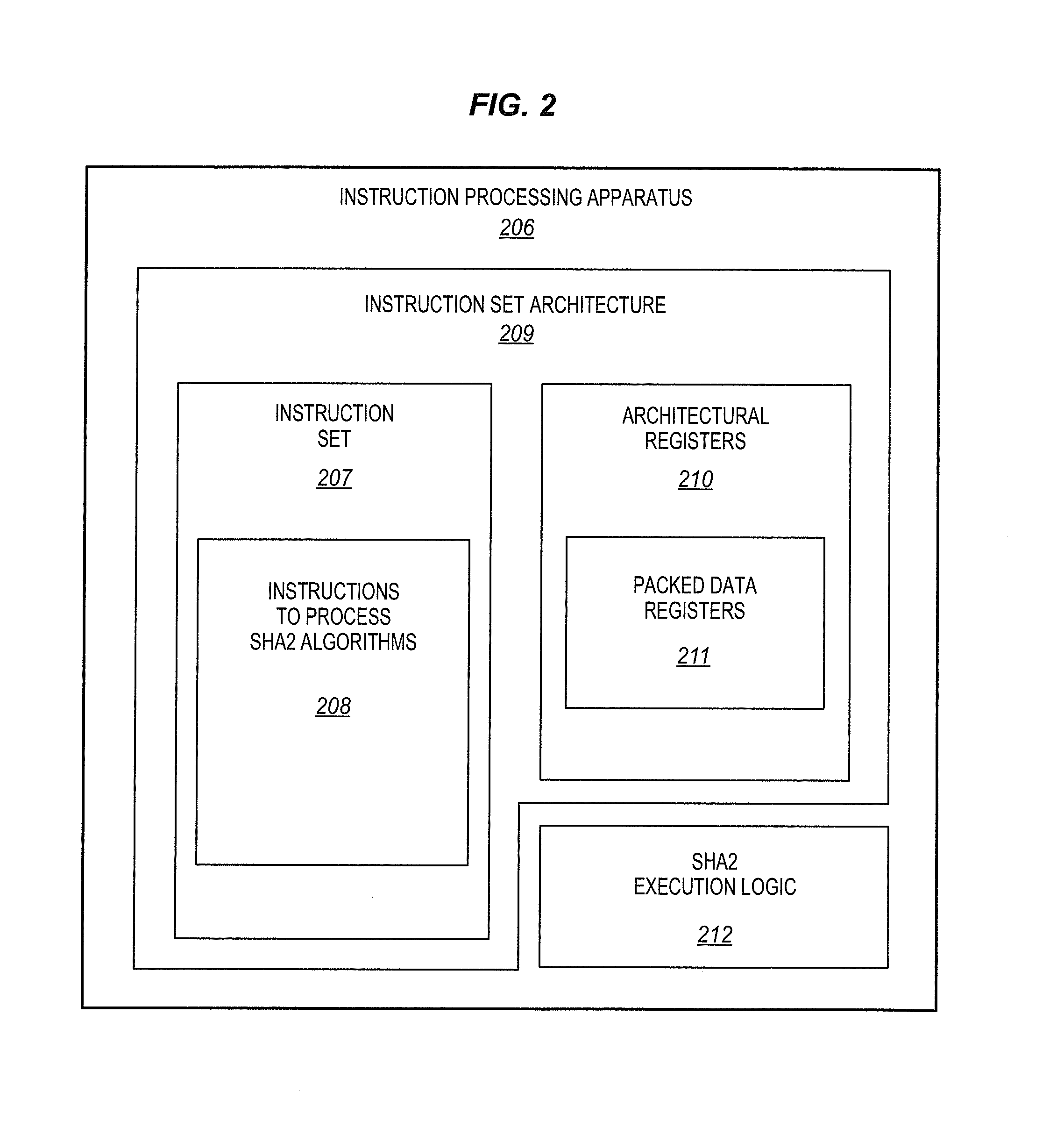Instructions processors, methods, and systems to process secure hash algorithms
- Summary
- Abstract
- Description
- Claims
- Application Information
AI Technical Summary
Benefits of technology
Problems solved by technology
Method used
Image
Examples
first embodiment
[0156]FIG. 13A is a block diagram of a suitable instruction format. The instruction format includes an operation code or opcode 1346A. The opcode may represent a plurality of bits or one or more fields that are operable to identify the instruction and / or the operation to be performed. The instruction format also includes a first source / destination specifier 1348A and a second source specifier 1350A. By way of example, each of these specifiers may include bits or one or more fields to specify an address of a register, memory location, or other storage location. The first source / destination specifier is to specify a storage location that is to have a first source operand and the same specified storage location is also to be used as the destination where the result is to be stored. Alternatively, in another embodiment, one or more of the first source / destination and / or the second source may be implicit to the instruction instead of being explicitly specified. This instruction format sp...
second embodiment
[0157]FIG. 13B is a block diagram of a suitable instruction format. The instruction format includes an operation code or opcode 1346B, a first source / destination specifier 1348B, and a second source specifier 1350B. Each of these may be similar to or the same as those of the first instruction format. This instruction format also includes an optional third source specifier 1352B to specify a third source storage location where a third source operand is stored. Alternatively, the third source storage location may be may be implicit to the instruction instead of being explicitly specified. This instruction format specifies or otherwise indicates three sources. The instructions shown and described above for FIGS. 9-10 are very useful for such instruction formats.
third embodiment
[0158]FIG. 13C is a block diagram of a suitable instruction format. The instruction format includes an operation code or opcode 1346C, a first source / destination specifier 1348C, a second source / destination specifier 1350C, and an optional third source specifier 1352C. Each of these may be similar to or the same as those of the second instruction format except that the second source specifier is also used for a destination. This instruction format specifies or otherwise indicates three sources and two destinations. The instructions shown and described above for FIGS. 11-12 are very useful for such instruction formats. As described above, in some embodiments, one of the destinations may be written about half way through the execution of the instruction after two rounds and the other destination may be written after all four rounds.
[0159]These are just a few illustrative embodiments. It is to be appreciated that in other embodiments one of the explicit specifiers may instead be implic...
PUM
 Login to View More
Login to View More Abstract
Description
Claims
Application Information
 Login to View More
Login to View More - R&D
- Intellectual Property
- Life Sciences
- Materials
- Tech Scout
- Unparalleled Data Quality
- Higher Quality Content
- 60% Fewer Hallucinations
Browse by: Latest US Patents, China's latest patents, Technical Efficacy Thesaurus, Application Domain, Technology Topic, Popular Technical Reports.
© 2025 PatSnap. All rights reserved.Legal|Privacy policy|Modern Slavery Act Transparency Statement|Sitemap|About US| Contact US: help@patsnap.com



